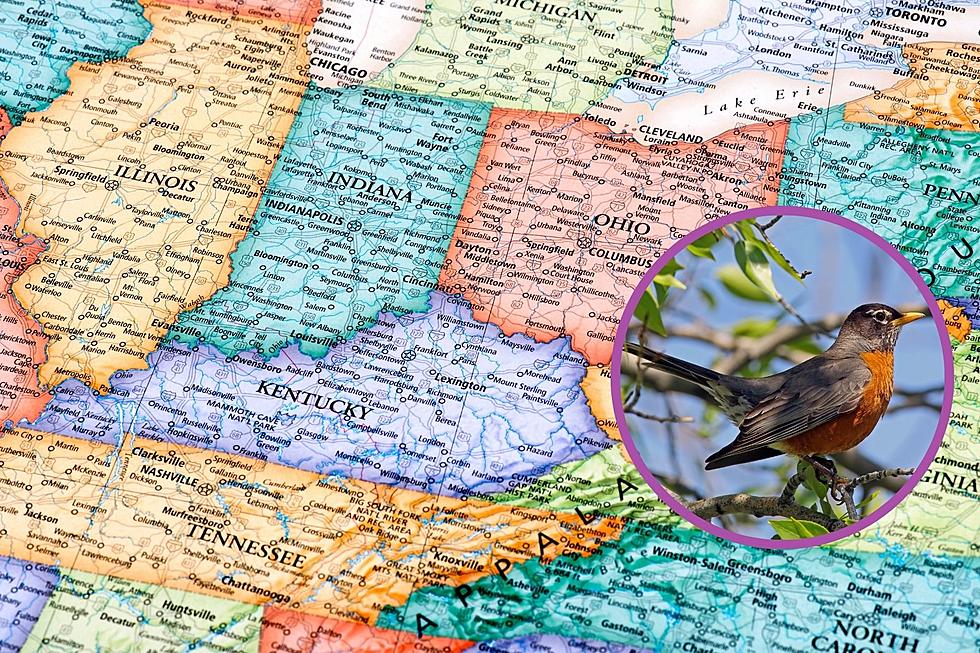
More States Reporting Sick & Dying Birds Including Indiana & Kentucky
Nearly a dozen states and the District of Columbia, are now reporting sick and dying birds, including both Indiana and Kentucky.
Last week there was an update from the Indiana Department of Natural Resources claiming the sick and dying songbirds had been found in 43 counties across the Hoosier State. A new update has now expanded that list to 53 counties in Indiana. These include Vanderburgh, Warrick, and Gibson Counties here in Southern Indiana.

The songbird deaths are not exclusive to Indiana. They are being infected in Kentucky as well as Ohio and, according to the Kentucky Department of Fish and Wildlife Resources, in parts of the eastern portion of the United States in Washington D.C., Maryland, Virginia, West Virginia, Delaware, New Jersey, and Pennsylvania. A veterinarian with Kentucky Fish and Wildlife said that wildlife officials from several states are working together to try to figure out what is causing the illness.
The Indiana Department of Natural Resources has said previously that the dead birds have tested negative for Avian Flu and West Nile Virus. Officials with the Kentucky Department of Fish and Wildlife Resources say that they are working with the various state's wildlife agencies as well as the National Parks Department to have the birds tested at the following laboratories: "USGS National Wildlife Health Center, the University of Georgia Southeastern Cooperative Wildlife Disease Study, the University of Pennsylvania Wildlife Futures Program and the Indiana Animal Disease Diagnostic Laboratory." Kentucky officials say the birds have been tested for a number of illnesses, both bacterial and viral,
The following pathogens have not been detected in any birds tested, based on results received to date: Salmonella and Chlamydia (bacterial pathogens); avian influenza virus, West Nile virus and other flaviviruses, Newcastle disease virus and other paramyxoviruses, herpesviruses and poxviruses; and Trichomonas parasites. Transmission electron microscopy and additional diagnostic tests, including microbiology, virology, parasitology, and toxicology are ongoing.
Indiana DNR says that "blue jay, American robin, common grackle, starling, northern cardinal, brown-headed cowbird" are the species primarily being affected by the illness. Indiana is asking all residents to cease feeding birds. In Kentucky, it has been asked that residents in Boone, Bullitt, Campbell, Jefferson, Kenton, and Madison counties cease feeding birds immediately and for those residents not living in one of those counties, it is recommended that feeders be cleaned with a 1:9 ratio of bleach to water (or a 10% bleach solution). The feeders should then be rinsed with water and allowed to air dry.
If you find a dead bird you can use the following links to report it to your respective wildlife agency.
- In Indiana, report it to the Indiana Department of Natural Resources
- In Kentucky, report it to the Kentucky Fish and Wildlife Resources
The illness reportedly is causing the infected songbirds to experience swelling of the eyes, loss of vision, neurological symptoms, and death. If you encounter a dead bird, use gloves to handle it, place it into a sealable plastic bag and dispose of it in an enclosed trash recepticle. At this time, neither the Indiana Department of Natural Resources or the Kentucky Department of Fish and Wildlife Resources believe there to be any threat to humans but do advise that you keep any pets away from sick or dead birds.
[Source: Indiana DNR; Kentucky Dept. Fish & Wildlife Resources]
WATCH OUT: These are the deadliest animals in the world
LOOK: Stunning animal photos from around the world
LOOK: 30 fascinating facts about sleep in the animal kingdom
Why do cats have whiskers? Why do they meow? Why do they nap so much? And answers to 47 other kitty questions:
More From WGBFAM








